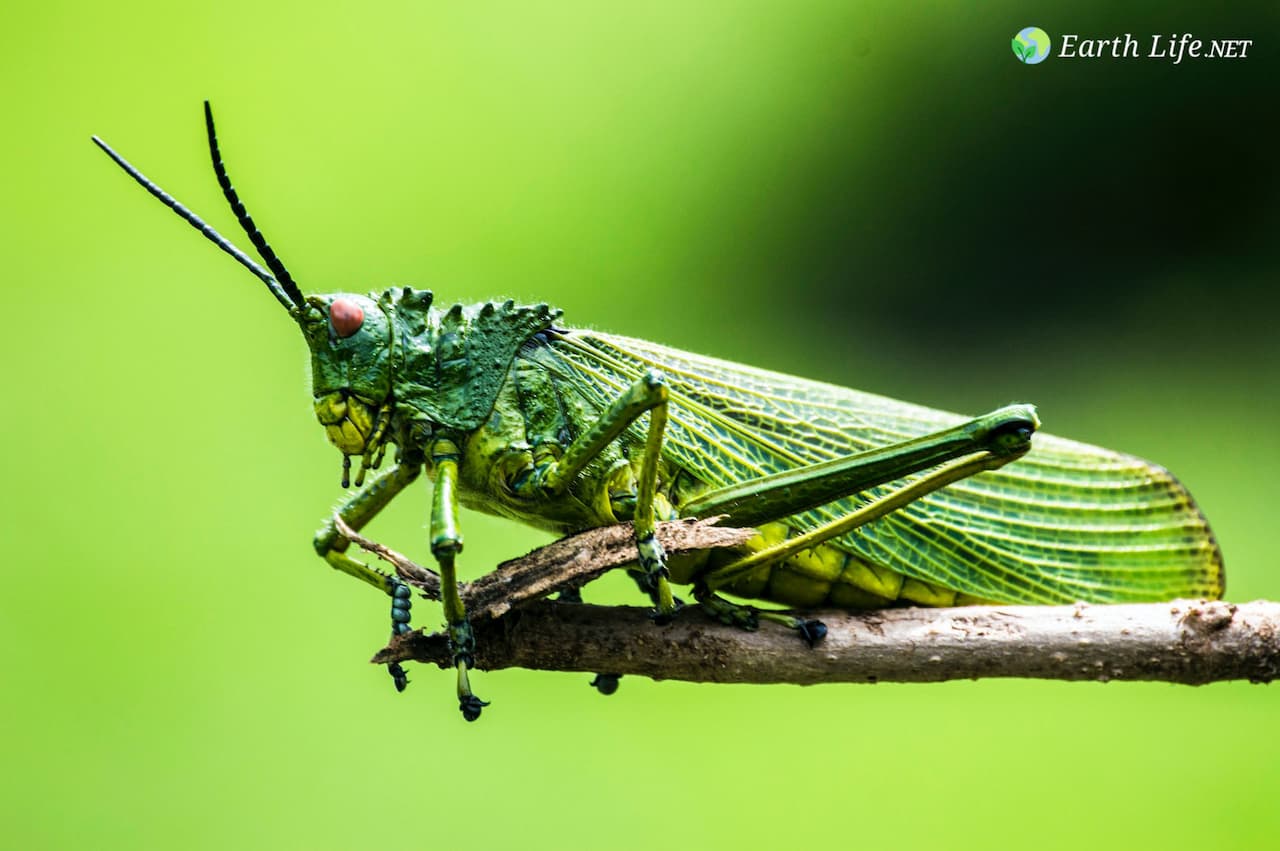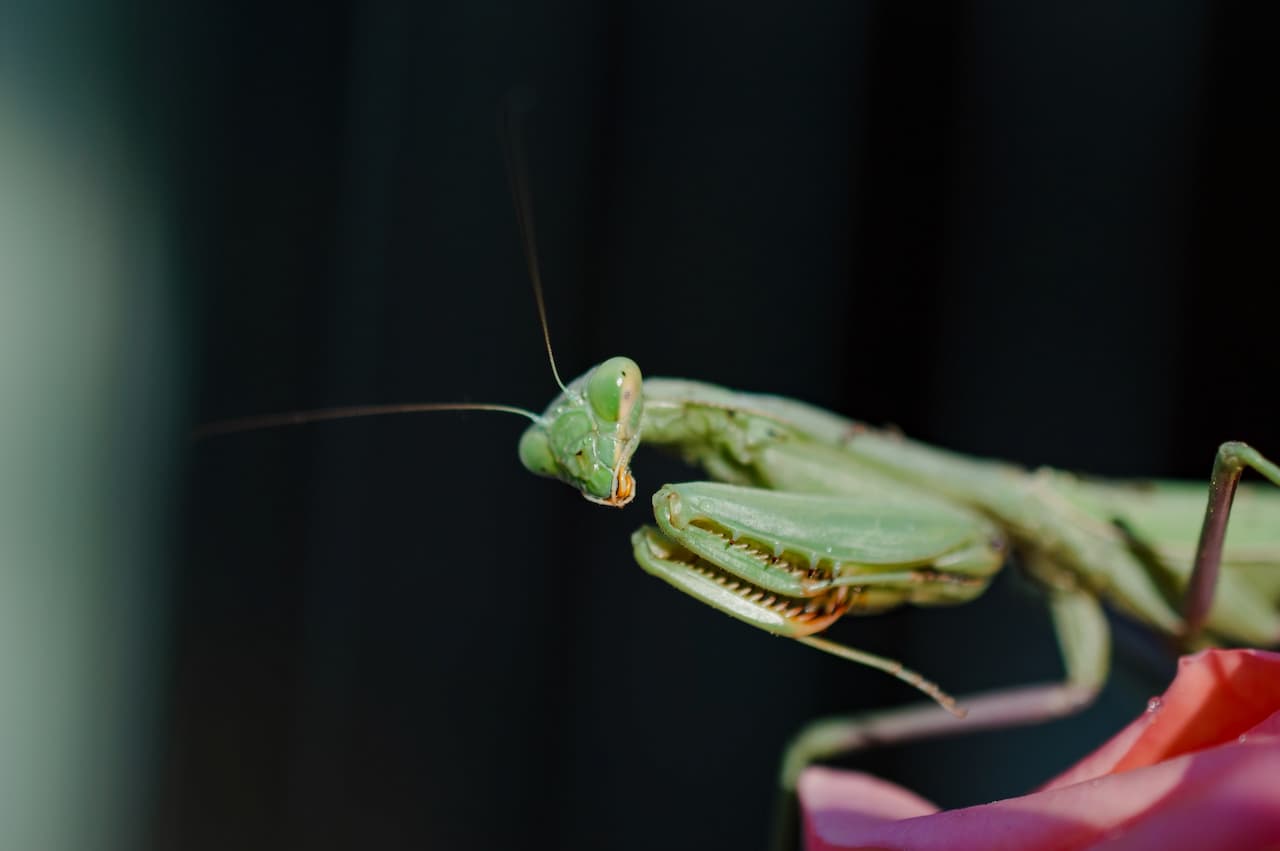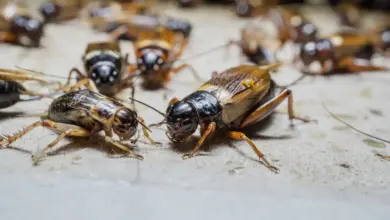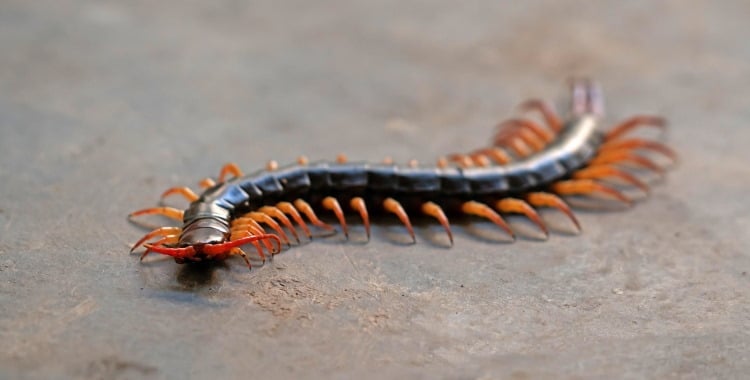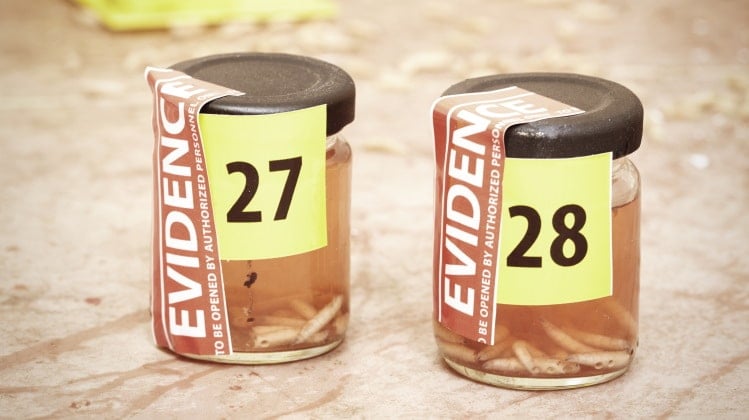Parasitoids are a diverse and ecologically significant group that has young which develop on or within a host and eventually kill it.
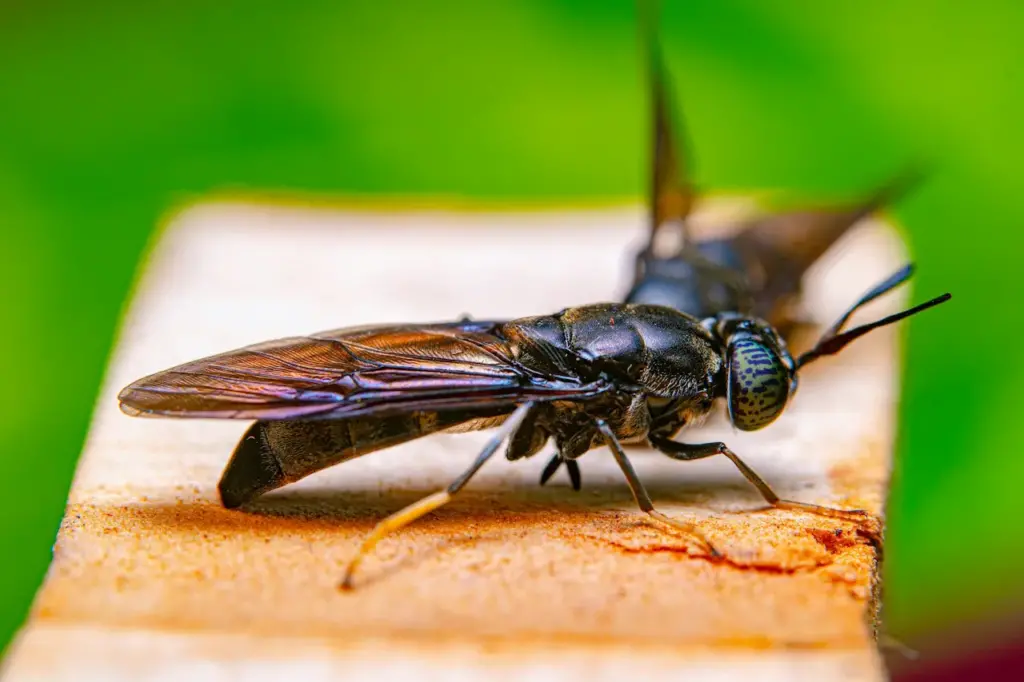
They differ from true parasites that derive nutrients from hosts. There are estimated to be over 600,000 global parasitoid species, predominantly wasps, flies, beetles, and mites.
Parasitoids play vital ecological roles in regulating host populations, connecting food webs, indicating habitat quality, and providing biological pest control. Their varied life histories reveal fascinating evolutionary adaptations.
With increasing threats from habitat loss, pesticides, invasive species, and climate change, conserving parasitoid diversity is an emerging priority.
This article explores the biodiversity, natural history, ecological functions, threats, and research priorities for parasitoids. It provides an overview of these important organisms and why they warrant expanded scientific understanding and conservation efforts.
Taxonomic Diversity
Parasitoids have independently evolved in multiple arthropod lineages:
Insect Parasitoids
Within the class Insecta, wasps in the order Hymenoptera make up over 60% of described parasitoid species, especially certain superfamilies like Ichneumonoidea which are highly speciose. The ichneumon wasps are a prime example, with nearly 60,000 described species, though possibly over 100,000 exist.
Many families within Diptera, the flies, also contain parasitoids, such as the tachinids. Beyond wasps and flies, some bees, ants, and beetles have subgroups where species evolved to become parasitoids.
The wide distribution of parasitoid lifestyles across insect orders illustrates how the behavior arose independently multiple times as an effective survival strategy.
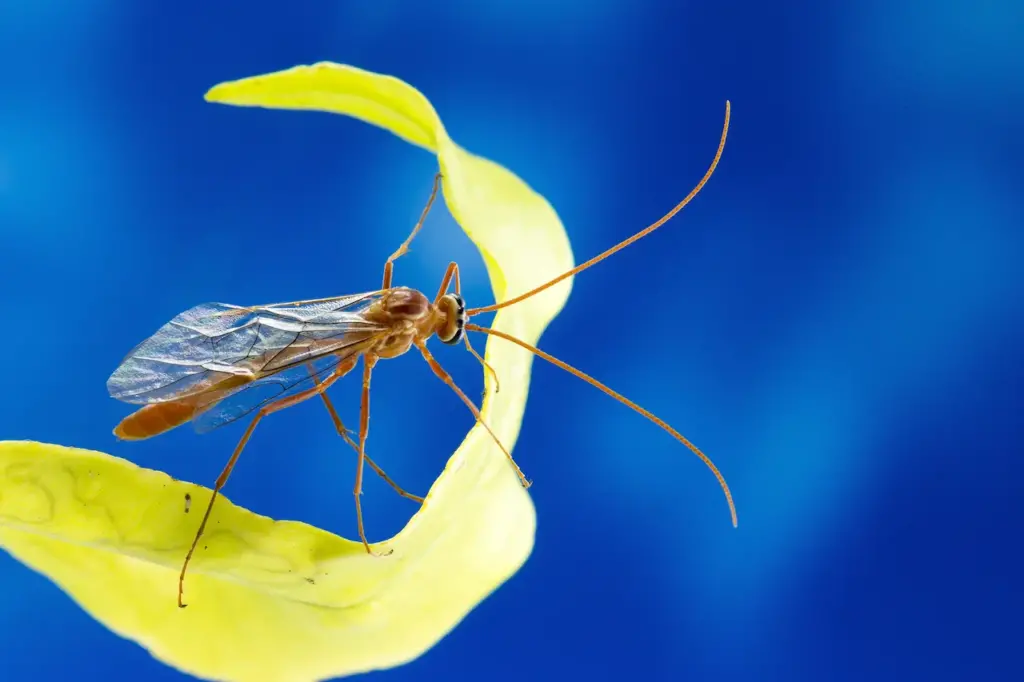
Acari Parasitoids
Within the subclass Acari, the mites, there are also many examples of parasitoid species. In particular, the families Pyemotidae and Pygmephoridae contain important agricultural biocontrol agents that parasitize insect pest species.
Their small size allows entry into concealed microhabitats and passage through tiny openings to access hosts.
Parasitoid Crustaceans
Remarkably, some unusual parasitoids occur in the crustacean subclass Ostracoda. Here the larval stages develop by infecting and consuming insect eggs, such as mosquito eggs, before emerging as free-living adults.
This represents a rare occurrence of parasitoid lifestyle in non-insect arthropods. The larvae of certain ostracods help regulate populations of mosquitoes that vector dangerous diseases.
Parasitoid Nematodes
Even some worm species in the phylum Nematoda function as parasitoids, especially certain genera that target insect hosts. The genus Howardula for example is known to parasitize beetles.
Their resilience and protective cuticles allow nematodes to persist within host bodies until completing development. This underscores how parasitoid lifestyles have arisen across vastly different animal taxa.
Life Cycles and Strategies
To successfully reproduce and propagate generations, parasitoids utilize diverse and often complex life history strategies tailored to particular host species and environmental conditions. There are many variations on parasitoid themes:
Direct Life Cycles
The most straightforward parasitoid life cycle involves juveniles directly infecting, consuming, and completing all development within a single living host individual before emerging from the spent host as a free-living adult.
Many species in the parasitic wasp family Ichneumonidae exemplify this direct life cycle, such as the genus Megarhyssa which specializes in parasitizing wood-boring beetle larvae. Direct development maximizes resource utilization from each host.
Indirect Life Cycles
Some parasitoids employ a more complex indirect strategy utilizing one or more intermediate hosts to ultimately reach their primary target host concealed inside plant tissues like stems, roots, or wood.
The initial intermediate host provides transport to bring the parasitoid into contact with the concealed final host. Specialized female ovipositors allow these indirect parasitoids to pierce through plant bark or tissue to inject eggs directly into the hidden host.
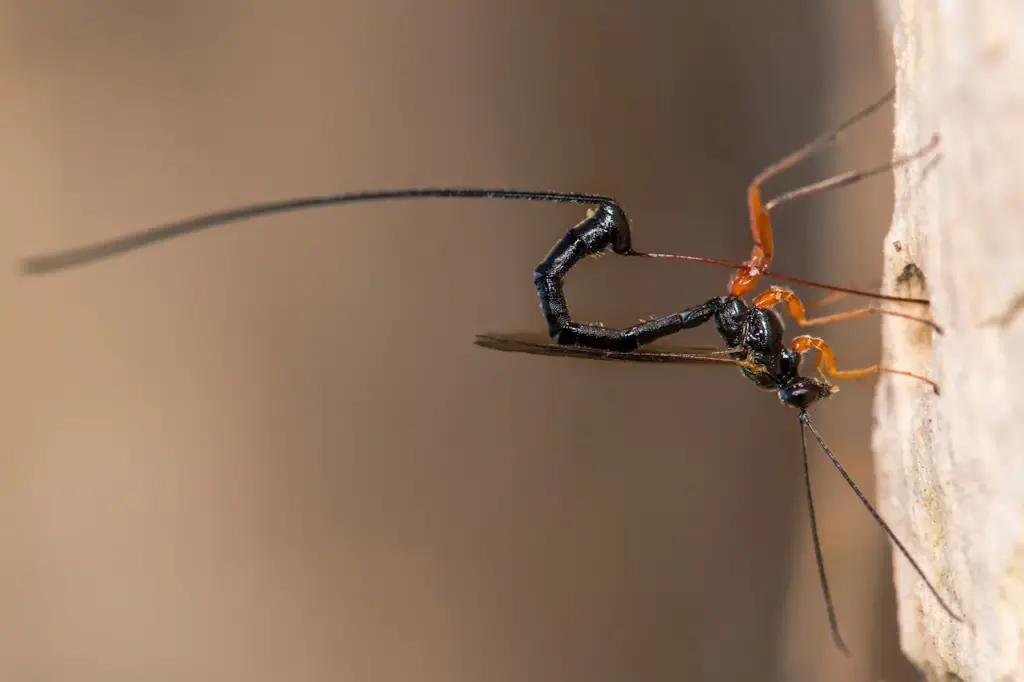
Hyperparasitoids
These parasitoids add another layer of complexity by developing through parasitizing other primary parasitoids. The hyperparasitoids hijack the primary parasitoid, often reducing its fitness, and survival, or sterilizing its reproduction.
This represents a 4th trophic level allowing some of the primary parasitoid’s assimilated energy to flow up the food chain rather than just returning to the base when the parasitized host dies. Some hyperparasitoids are specialized for attacking certain primary parasitoid species.
Facultative Hyperparasitoids
In contrast to obligate hyperparasitoids, some parasitoid species exhibit flexibility in being able to utilize either herbivorous insect hosts or other parasitoid hosts.
This provides expanded options, allowing them to switch between primary and secondary strategies depending on host availability and maximizing reproductive success.
Polyembryony
An extremely unusual reproductive adaptation found in some specialized wasp parasitoids involves polyembryony, where a single egg laid by the female can divide into multiple clonal embryos that develop within one host.
This exponential increase in offspring from a single oviposition into one host represents an evolutionary adaptation to maximize reproductive output from each located host. Copidosoma floridanum demonstrates polyembryonic development.
Parasite-Induced Behavior Changes
Some of the most insidious and fascinating parasitoid adaptations involve manipulating the behavior of the host to aid parasitoid growth or survival. A classic example is the Glyptapanteles wasp whose larvae induce the caterpillar host to stop feeding and instead defend the parasitoid pupae after they emerge from the caterpillar’s body, protecting the wasp offspring until their adulthood. Viral genes inserted into parasitoid genomes may facilitate such behavioral manipulation of hosts.
Sex Ratio Modification
Another adaptive strategy is facultative adjustment of offspring sex ratios in response to environmental cues to maximize reproductive success. When host density is low and intraspecific competition is likely to be intense, mothers may bias offspring towards lower competition daughters.
But when hosts occur in dense patches, mothers can maximize dispersal ability by producing more widely ranging sons. Host nutritional quality can also sway the determination of offspring sex ratios.
This remarkable diversity of reproductive and developmental ploys helps enable parasitoids to thrive across many habitat types and exploit a wide variety of host species. The varied strategies reflect millions of years of evolutionary fine-tuning to optimize parasitoid propagation.
Ecological Functions
Beyond their life history intricacies, parasitoids also provide important ecosystem services as consumers of other arthropods with cascading impacts on food webs and ecological processes:
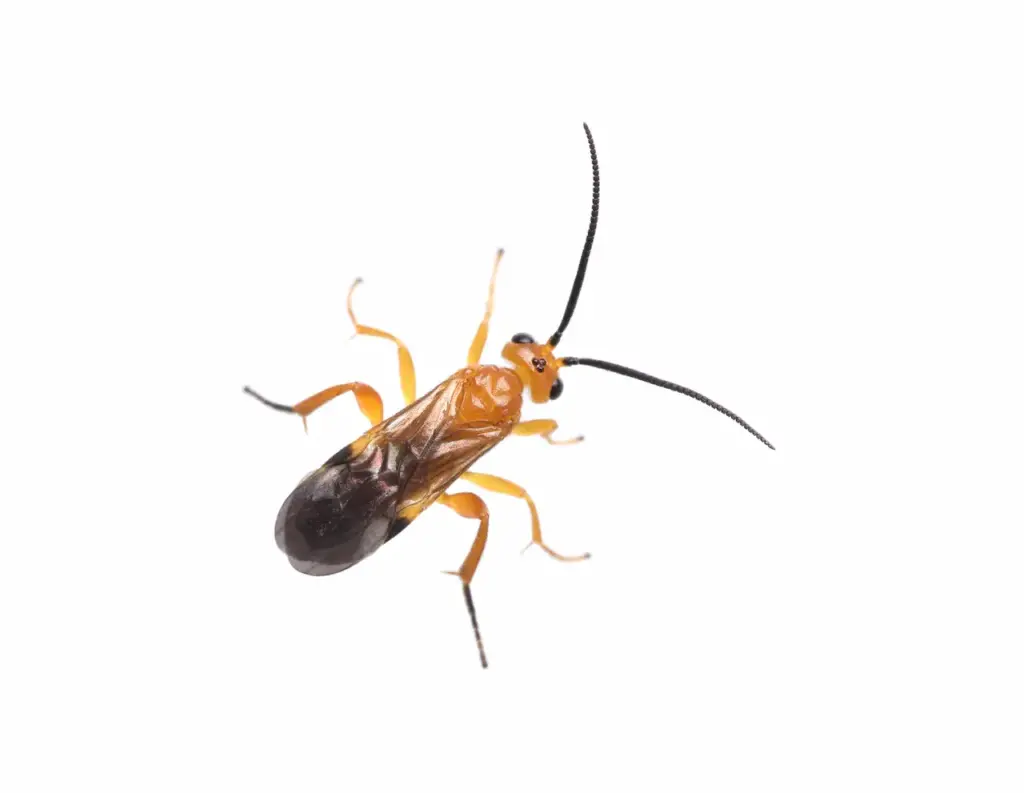
Pest Control
Parasitoids help suppress populations of agricultural and residential insect pests through infection. Augmentative releases of mass-reared parasitoids provide biological control of crop pests.
Food Web Connections
As consumers of other insects and arthropods, parasitoids link lower and higher trophic levels, transferring energy flow and nutrients through food webs. Declining parasitoids cause disruptive trophic cascades.
Pollination
While parasitizing herbivores, some parasitoids inadvertently transfer pollen between plants as a secondary service benefiting some species. Though not their primary ecological role.
Indicators of Habitat Quality
Parasitoid diversity and community composition serve as a biological indicator of habitat health in both natural and managed ecosystems. Higher-quality habitats support more parasitoid species.
Selective Pressures
By selectively eliminating hosts, parasitoids drive the evolutionary trajectories of host populations by imposing natural selection for resistance adaptations. This ongoing coevolution increases genetic diversity.
Climate Change Buffering
As consumers of herbivores, parasitoids may help buffer climate change impacts on plant communities by regulating populations of range-expanding herbivores in new habitats.
Parasitoids provide influential yet underappreciated ecosystem services warranting greater recognition and protection.
Host-Parasitoid Dynamics
The interactions between parasitoids and their hosts involve complex dynamics shaped by both ecological conditions and evolutionary adaptations. The outcome of these battles for survival has consequences for ecological stability. Key mediating factors include:
Host Defenses
Hosts have evolved myriad defensive counters to avoid or overcome parasitoid infection, including camouflage, warning coloration, tough integuments, hiding behaviors, evasive maneuvers, innate immune system responses, and symbioses with protective microbial partners.
In turn, parasitoids evolve counter-adaptations to overcome host defenses and enhance virulence through more potent venoms, efficient immune suppression, host behavior manipulation, and other means, triggering ongoing coevolutionary arms races over time.
Host Specificity
Parasitoids vary dramatically in host specificity, from extreme host specialists that can complete development in just one or a few closely related host species to broad generalist parasitoids capable of infecting hosts across multiple taxa.
Specialists suffer from ecological limitations, being excluded if their preferred host is lost. But generalists show resilience to habitat changes. Host specificity determines the risks posed if introduced to new ecosystems for biocontrol.
Virulence Factors
Parasitoids employ an array of biological weaponry to overcome host defenses and create optimal conditions for growth and emergence.
These virulence factors include venoms that paralyze and suppress host immune responses, secretions that hide the parasitoid’s scent, and reproductive cells or virus-like particles that manipulate host physiology and behavior in the parasitoid’s favor.
Sharp ovipositors allow the injection of eggs through tough host cuticles.
Density Dependence
Parasitism rates depend heavily on host density based on search efficiency. When hosts occur at high densities, parasitoids can locate and oviposit in multiple hosts easily, exhibiting an aggregative numerical response that helps regulate pest outbreaks.
But at very low host densities, search times make finding hosts untenable and parasitoids cannot persist on sparse hosts. Minimum viable host densities vary among parasitoid species based on search modes and attack rates.
Phenological Synchrony
Parasitoid life stages and development must be synchronized with vulnerable phases in the host’s life cycle for successful growth and emergence.
If climate change disrupts ecological timing, causing host-parasitoid phenological mismatch, parasitoid populations suffer lower fitness from an inability to capitalize on transient host availability. Milder winters already advance host phenology creating seasonal asynchronies.
Facilitation and Competition
In multi-parasitoid communities, one species may facilitate the success of another species on a shared host through immune suppression or deactivating host defenses before the secondary attack, improving overall parasitism.
However, competition for limited hosts also occurs, resulting in niche partitioning and exclusion among parasitoids over time. Overall community complexity mediates these dynamics.
Myriad subtle factors mediate the variable outcomes of host-parasitoid struggles for survival, with implications for larger ecosystem stability. Advanced molecular tools can provide new insights into these species interactions.
Threats and Challenges
Although parasitoids possess resilient adaptive capabilities, several anthropogenic changes threaten their future:
Habitat Loss and Fragmentation
Conversion of natural areas for agriculture and development removes necessary vegetation complexity required by many parasitoids and isolates populations.
Agricultural Intensification
Pesticide use, fertilizers, mechanized tillage, and removal of non-crop plants reduce resources and access needed by parasitoids for persistent biocontrol in agroecosystems.
Climate Change
Changing temperature, precipitation, and seasonality disrupt the ecological synchrony between parasitoids and host phenology needed for successful development. Range shifts decouple associated species.
Invasive Species
Introduced generalist parasitoids outcompete specialized native parasitoids. Imported pests often arrive without any co-evolved natural enemies native to the local area.
Pollution
Agrochemical residues, heavy metals, pharmaceuticals, and other pollutants accumulate in insects, harming parasitoids through bioaccumulation when they consume contaminated hosts.
Knowledge Gaps
Major gaps in scientific understanding of the taxonomy, life histories, and ecology of parasitoids impede effective conservation planning to ensure their continuity.
Protecting valuable parasitoid biodiversity and ecosystem services requires research-supported management minimizing harm from human activities.
Uses for Humans
In addition to ecological services, parasitoids provide direct benefits to humans:
Biological Pest Control
Releasing mass-reared natural enemy parasitoids helps suppress crop pests, weeds, and invasive species as sustainable alternatives to pesticide applications in agriculture and forestry.
Medical Resources
Chemicals in parasitoid venoms show potential antimicrobial, neuropharmaceutical, and immunomodulatory properties worth exploring for new drugs and treatments.
Transgenic Applications
Inserting parasitoid genes into pest genomes could theoretically change traits or suppress populations, though feasibility and environmental risks require extensive further research.
Forensic Indicators
Identifying parasitoids on corpses provides clues about the post-mortem interval and conditions to aid forensic investigations and the timing of death.
Ecotourism
Birdwatching, photography, and appreciation of rare, colorful parasitoids support local ecotourism enterprises that incentivize conserving parasitoid habitat and diversity.
Bioinspiration
Parasitoid sensory adaptations and ovipositor designs already inspire innovations in surgical instrumentation, drones, and robotic sensors. More biomimetic applications likely await discovery.
Harnessing parasitoids sustainably requires fully understanding their ecology to prevent unintended environmental consequences.
Conservation Actions
Several strategies can help protect declining parasitoid populations:
Habitat Protection
Preserving patches of semi-natural habitat and vegetative diversity in agricultural mosaics provides necessary resources for parasitoids to persist in human-altered environments.
Reduced Pesticide Use
Curtailing prophylactic insecticide applications and adopting integrated pest management minimizes harm to beneficial parasitoids while still controlling pests only when necessary.
Climate-Smart Agriculture
Building landscape resilience to climate shifts requires agricultural practices that enhance biodiversity and conserve beneficial species like parasitoids, which contribute to ecosystem services.
Biological Control Advances
Improved rearing, precision release, and molecular matching techniques boost the biocontrol efficacy of introduced parasitoids against weeds and pests in sustainable agriculture systems.
Taxonomy and Ecology Research
Filling knowledge gaps in parasitoid taxonomy, life histories, habitat needs, and vulnerability to environmental changes enables designing evidence-based conservation strategies.
Legal Protections
Laws restricting parasitoid habitat destruction, regulating biocontrol practices, and limiting the transport of invasive species help mitigate key threats to native parasitoid persistence.
With proactive efforts across sectors, parasitoid diversity and ecosystem functionality can be maintained despite expanding human environments and activities.
Future Research Directions
Key research priorities for advancing parasitoid science include:
Taxonomy and Systematics
Morphological and DNA barcoding surveys are needed to discover unknown parasitoid species diversity, reveal evolutionary relationships, and develop open-access repositories cataloging specimens.
Life History Strategies
Elucidating the myriad reproductive and developmental strategies parasitoids have evolved aids efforts to rear, propagate, and apply parasitoids for biological control.
Habitat Modeling
Determining habitat factors shaping parasitoid abundance, diversity, and ecological functions facilitates targeted landscape management plans that optimize parasitoid success.
Climate Adaptations
Identifying adaptations, temperature tolerances, shifting phenologies, and vulnerabilities to climate change improves models forecasting range shifts and extinction risks for parasitoids.
Host-Parasitoid Networks
Analysis of bipartite host-parasitoid food webs reveals multi-species interaction strengths, stability, cascades, facilitation, and biocontrol efficacy.
NextGen Molecular Tools
Emerging molecular techniques like metabolomics, proteomics, and transcriptomics enable decoding mechanisms governing parasitoid host manipulation, evasion of immunity, and stress response.
Data Science Integration
Applying predictive analytics and machine learning algorithms to expansive ecological data streams on parasitoids will expose non-intuitive patterns and drivers that are difficult to discern otherwise.
Addressing these research needs will support the science-based conservation of these valuable species along with their continued ecological contributions in both natural and agricultural ecosystems.
Conclusion
Parasitoids have independently evolved across many arthropod lineages, utilizing diverse and complex life history strategies to propagate by ultimately killing arthropod hosts. These overlooked organisms provide vital ecological services like pest suppression, food web stability, and habitat quality indication. However, parasitoids now face escalating extinction risks from habitat loss, pesticides, invasive competitors, climate change, and other anthropogenic threats.
Sustaining parasitoids for functional ecosystems aligned with human interests requires protecting habitat complexity, reducing unintentional harm to parasitoids from agriculture, utilizing parasitoids in biocontrol sustainably, and expanding research to fill key knowledge gaps.
With greater awareness and conservation commitment, parasitoids will continue thriving where ecological balance persists. Parasitoids warrant recognition for their positive contributions and concentrated conservation efforts to match their ecological importance.

